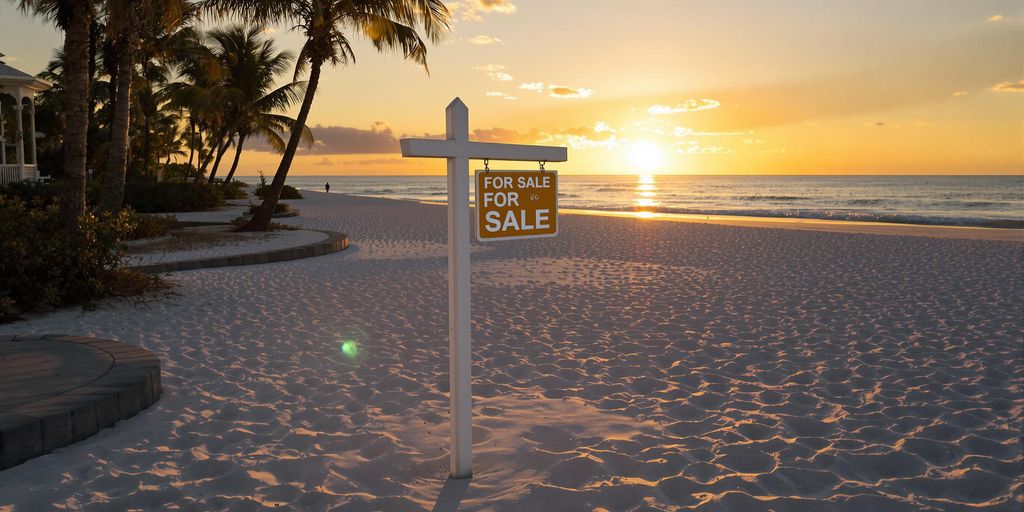Florida’s once-booming housing market is experiencing a significant cool-down, transitioning from a seller’s to a buyer’s market. This shift is marked by a surge in available inventory, widespread price reductions, and a notable decrease in demand, particularly in areas that saw rapid appreciation during the pandemic.
Florida’s Housing Market Takes a Turn
After years of unprecedented growth fueled by an influx of new residents and investors, Florida’s housing market is now facing a correction. Several factors contribute to this reversal:
- Increased Inventory: The number of homes for sale has quadrupled in South Florida since 2022, reaching nearly a decade high. This oversupply gives buyers more options and leverage.
- Price Reductions: Florida dominates the national landscape for price cuts, with cities like North Port, Tampa, Cape Coral, and Jacksonville seeing significant percentages of listed homes reducing their asking prices.
- Cooling Demand: The frantic pace of migration has slowed, and many potential buyers are priced out due to high home values combined with elevated mortgage rates.
Key Drivers of the Market Shift
Several critical issues are contributing to the current state of Florida’s housing market:
- Affordability Crisis: Despite recent dips, home prices remain drastically higher than pre-pandemic levels. The median home price in Florida is around $390,000, requiring a substantial income to afford, making homeownership unattainable for many local residents.
- Skyrocketing Costs of Ownership: Beyond mortgage payments, homeowners face escalating expenses. Florida has the highest average home insurance premiums in the U.S., around $11,000 annually, nearly four times the national average. Rising HOA fees, partly due to stricter building regulations post-Surfside collapse, also add to the burden.
- Investor Pullback: Higher interest rates and the prospect of declining prices have made real estate investments less attractive, leading to a significant drop in investor purchases across the state.
- Supply Outpacing Demand: The rapid increase in available homes, coupled with a decrease in buyer interest, has shifted market dynamics firmly in favor of buyers.
Markets at High Risk of Price Decline
According to recent analyses, several Florida markets are at a very high risk of experiencing significant price declines. These include:
- Cape Coral, FL
- Lakeland, FL
- North Port, FL
- St. Petersburg, FL
- West Palm Beach, FL
- Winter Haven, FL
- Tampa, FL
These areas, which saw some of the most rapid appreciation during the boom, are now experiencing the most pronounced corrections. For instance, Cape Coral saw a year-over-year price decline of 6.5% in April 2025.
Implications for Buyers and Sellers
This market correction presents both challenges and opportunities:
- For Buyers: Increased inventory and price reductions offer more choices and negotiation power. However, caution is advised, and thorough research into specific neighborhoods and total ownership costs (including insurance) is crucial.
- For Sellers: The days of quick sales and multiple offers are largely over. Sellers must price their homes competitively based on current market conditions, be prepared for longer listing times, and potentially negotiate on price or offer concessions.
While Florida’s appeal remains, the housing market is undergoing a necessary adjustment. This period of correction aims to bring prices back into alignment with local incomes and sustainable growth, moving away from the unsustainable boom of recent years.
Sources
- Housing market hitting the brakes? New analysis finds Florida dominates areas slashing home prices, Florida Politics.
- 5 Big Florida Housing Markets Flagged for a Major Price Decline Risk, Norada Real Estate Investments.
- Southern state residents ‘desperate to escape’ but homes won’t sell as crash looms, Daily Mail.
- 2 Florida Housing Markets Flagged for a Major Price Decline Risk, Norada Real Estate Investments.
- South Florida Homes for Sale Quadruple As Residents Leave En Masse, Newsweek.


